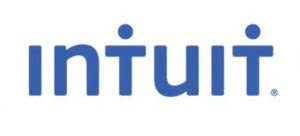
Car buyers are “routinely hit with unexpected and unnecessary fees that dealers extract just because they can,” said FTC Chair Lina Khan in a press release. It’s almost hard to believe this happens, yet the Federal Trade Commission gets more than 100,000 complaints a year about these scams, which cost consumers more than $3 billion annually. We view challenges from the perspective of a dealer because many of our professionals previously worked within the industry and maintain strong relationships with lawyers, bankers, and other advisors crucial to pursuing your goals.

Accurate reporting can attract investors and secure favorable financing terms. Stay updated with industry regulations and best practices to adapt your bookkeeping and accounting processes accordingly. In a nutshell, with real-time accounting, you have relevant data and reports at any given time.
DealersEdge LLC – Memberservices@Dealersedge.com
At Accounts Junction, we understand these challenges and get ready for them. How can I enter a trade in, have that show as a credit to the purchase price as create a new item for it? I can create the item for the trade in with its own class and that works fine, but how to I account for the cost value of the new item?

On average, new vehicles now sell for about $38,000, more than many consumers can afford or are willing to pay. Car dealer scams have increased in recent years with vehicle shortages, surging prices and high consumer demand for cars, and while the FTC regularly enforces existing regulations, more needed to be done. The agency said that car dealership scams top the list of complaints filed each year.
Accounting/Finance
This does help me. What I am really looking for is the process and entries to make in QuickBooks from time of purchase thru rehab to inventory and than with the sale of the vehicle to make the entries. At this time it appears that I have to make two entries to complete this process. The IRS is specific, cost is composed of the purchase price ( or trade in allowance), plus all costs to get it on hand and to get it ready for sale. These are the cars you drive around when you’re evaluating whether to buy one. These cars come out of the regular dealership inventory and are recognized as fixed assets, which means that they have to be depreciated. Eventually, they’re sold off as used cars, which means that their remaining book value – after depreciation – is dropped into the used car inventory, and then they’re sold.
- Through regular reconciliations, dealerships can promptly identify and rectify any discrepancies, minimizing the risk of major financial mishaps.
- The Buy Rate is the APR THEY are offered by the lender, then they jack up the APR a few points when they present an offer to you.
- I’m sorry that I don’t have as much experience with the desktop version.
- Mr. Silverleib, the Honda dealer in Massachusetts, said vehicles like the Pilot he sold to Ms. Cray might last mere hours.
- We are here to help your dealership with an inventory strategy specific to your needs.
- Let’s check out how accounting software for dealerships can transform financial management in car dealerships.
- Look at account 240 Used Vehicles to see what is added to inventory asset and examples of the sale of a vehicle.
With accurate accounting information, dealerships can make informed decisions about their budget allocations. They can identify areas where costs can be reduced or reallocated to maximize profitability. Additionally, forecasting helps dealerships anticipate market trends and plan accordingly, ensuring they stay ahead of the competition.
In a car dealership accounting office, reconciliation can play a major role in improving profits.
Dealerships should have a system for tracking expenses and income that is accurate and up-to-date. Tracking expenses and income can help dealerships to identify areas where they can reduce costs and increase profits. With 200+ integrations for centralized F&I operations, the Autosoft dealer management system is built for data accuracy and digitally native dealership solutions. Autosoft simplifies car dealership financial management, helps you boost your bottom line and reduces churn, while you run your dealership from anywhere.

Dealerships should have a system for managing financial risks that includes identifying potential risks, developing risk management strategies, and monitoring risk exposure. Managing financial risks can help dealerships to avoid financial losses and maximize profits. The software automates routine transactions, such as recording car dealership accounting sales, calculating taxes, and processing payroll. This reduces the likelihood of errors and accelerates the financial workflow. Manual data entry and reconciliation processes increase the risk of errors in financial reporting. These errors can have severe consequences for financial decision-making and compliance.
On Sunday, Aharon Horwitz was listening to a podcast when he got an unusual Slack alert. Horwitz is the CEO of Fullpath, a tech company that sells marketing and sales software for car dealerships. The automated Slack alert meant there was an unusual amount of traffic on one of its client’s websites.
- By prioritizing reconciliation and embracing technology, car dealerships can position themselves for sustained success in the competitive automotive industry.
- It’s almost hard to believe this happens, yet the Federal Trade Commission gets more than 100,000 complaints a year about these scams, which cost consumers more than $3 billion annually.
- ARB’s Auto Dealership Services Group is dedicated to keeping our clients on the leading edge of industry trends, legislative updates, and best practices.
- Accounting software generates various financial reports, providing comprehensive insights into the dealership’s financial performance.
- At a high level, the accountant needs to charge their cost to the appropriate profit center, which is handled with the basic payroll entry.
At the end of the day, dealerships are businesses and businesses exist to make money. A car dealership accounting department is responsible for those funds and keeps track of all money coming in and going out. There are a lot of moving parts, and it is hard work – especially for some smaller dealerships that have accounting departments made up of one or two people.




